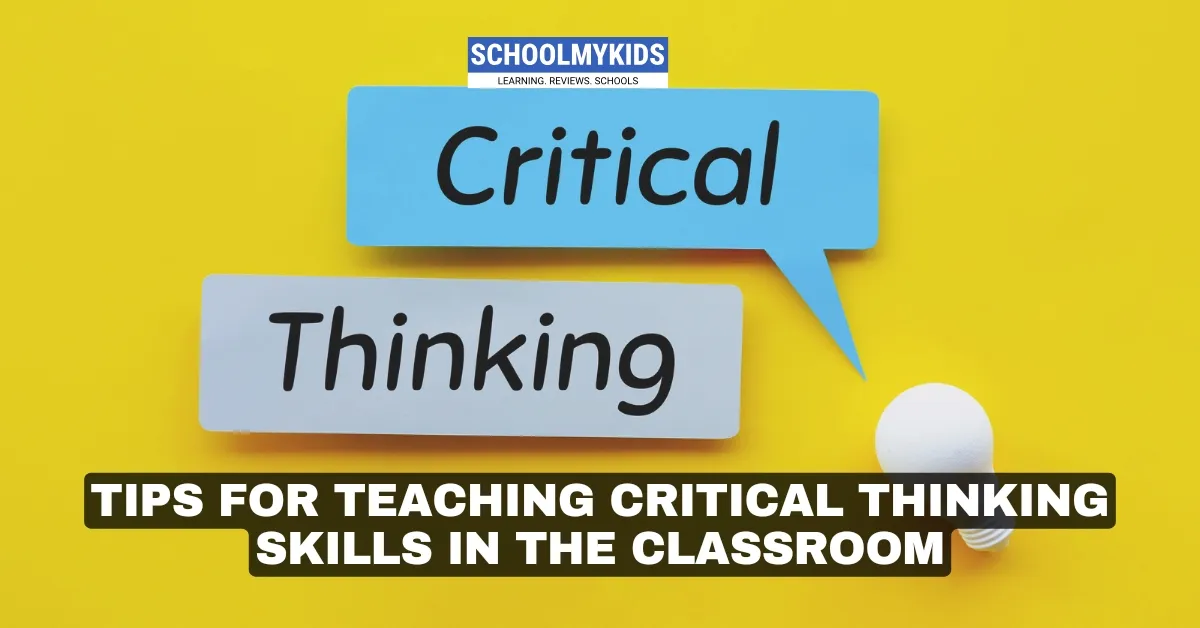Critical thinking in education refers to the ability to analyze, evaluate, and synthesize information in order to make reasoned judgments. It goes beyond rote memorization and basic comprehension; instead, it encourages students to question assumptions, explore alternative viewpoints, and consider the broader implications of their decisions. In the modern classroom, fostering these skills can be a game-changer, not only improving academic performance but also preparing students for the complex demands of the workforce.
Why Critical Thinking Matters
In a world filled with information, distinguishing fact from opinion, identifying biases, and making reasoned decisions are vital skills. Critical thinkers are better equipped to navigate the complexities of media, politics, and technology, making education in this area a high priority for teachers across disciplines.
1. Encourage Curiosity
The foundation of critical thinking is curiosity. Teachers should foster a classroom environment where questions are encouraged and curiosity is celebrated. When students ask "why" or "how," they begin the process of thinking more deeply about the subject matter. Promote an inquisitive mindset by asking open-ended questions and valuing the exploration of ideas.
2. Use Real-World Problems
Incorporating real-world issues into the curriculum helps students apply their critical thinking skills to practical situations. Engage students with problems that they might encounter outside the classroom, such as current events, environmental issues, or community challenges. Encouraging students to brainstorm, debate, and propose solutions allows them to practice thinking critically in meaningful contexts.
3. Foster Debate and Discussion
Debates encourage students to think critically about both sides of an issue. Organize debates or structured discussions on controversial or thought-provoking topics. By defending different viewpoints, students develop their ability to argue logically, evaluate evidence, and respect differing opinions. Encourage them to back up their arguments with facts and to remain open to changing their perspective based on new information.
4. Teach Questioning Techniques
Teaching students how to ask the right questions is key to developing critical thinking skills. Introduce them to Socratic questioning, which encourages deeper reflection by probing the reasons behind their beliefs or answers. This method promotes more analytical thinking, as students learn to dissect their assumptions, reasoning, and conclusions.
5. Use Thought Experiments
Thought experiments challenge students to think hypothetically and explore different outcomes of scenarios. These exercises can stimulate their creativity while honing their critical thinking abilities. By imagining alternate realities or outcomes, students can better understand cause-and-effect relationships and the role of various factors in decision-making processes.
6. Promote Reflection and Self-Assessment
Encourage students to reflect on their learning and thinking processes. Self-assessment tasks, such as journals or reflective essays, prompt students to evaluate their progress and the quality of their thinking. This metacognitive approach helps them recognize their biases, assumptions, and areas for improvement, making them more mindful critical thinkers.
7. Model Critical Thinking Skills
Teachers play a crucial role in modeling critical thinking. Demonstrate how you approach problems, analyze situations, and draw conclusions. Share your reasoning process with students and explain how you evaluate different sources of information. Modeling these behaviors in class provides students with a practical framework they can apply to their own thinking.
8. Encourage Collaboration
Group work and peer collaboration can enhance critical thinking skills as students are exposed to diverse perspectives. Encourage group problem-solving activities, where students must work together to evaluate options, think creatively, and reach a consensus. This process fosters open-mindedness, active listening, and cooperative learning, all of which are important components of critical thinking.
9. Provide Constructive Feedback
Timely and constructive feedback helps students recognize areas where they can improve their critical thinking skills. Offer feedback not just on their answers but on their reasoning processes, encouraging them to think about alternative approaches or solutions. Highlight both strengths and areas for growth, ensuring students learn to approach problems more critically in the future.
10. Encourage Multidisciplinary Learning
Exposing students to different subjects and perspectives can stimulate critical thinking. Interdisciplinary lessons or projects allow students to see how knowledge from various fields can be integrated to solve problems. This broader view encourages them to make connections between ideas and apply critical thinking across different domains of knowledge.
11. Incorporate Case Studies
Case studies provide real-world examples that require analysis and problem-solving. Use case studies from history, science, or business to allow students to explore complex situations, identify underlying issues, and propose reasoned solutions. Analyzing case studies forces students to think critically about the dynamics at play and consider the consequences of various decisions.
12. Use Visual Aids and Concept Mapping
Visual aids like charts, graphs, and concept maps help students organize and evaluate information more effectively. These tools allow them to break down complex topics, identify relationships between ideas, and develop more nuanced understandings. Encourage students to create their own visual representations of concepts, enhancing their ability to think critically about the subject matter.
13. Teach Logical Reasoning and Fallacies
A core aspect of critical thinking is understanding logical reasoning. Introduce students to common logical fallacies, such as ad hominem attacks or straw man arguments, and show how these weaken arguments. Teaching students to recognize faulty reasoning helps them build stronger, more coherent arguments and prevents them from falling into these traps themselves.
14. Use Problem-Based Learning (PBL)
Problem-based learning (PBL) places students in the driver’s seat as they explore complex, real-world problems without predefined solutions. In this student-centered approach, learners must research, collaborate, and propose solutions, using critical thinking to guide their process. PBL encourages creativity, decision-making, and reflective thinking, making it an ideal method for building critical thinking skills in a dynamic, engaging way.
15. Facilitate Peer Teaching and Peer Review
Having students teach or review their peers' work promotes critical thinking from multiple angles. When students explain concepts to others, they reinforce their understanding and evaluate their reasoning. Peer review, in which students critique one another’s work, fosters critical analysis and constructive feedback, helping learners to better assess the strengths and weaknesses of arguments.
16. Encourage a Growth Mindset
Instilling a growth mindset is essential for developing critical thinking. When students believe that their abilities can be improved through effort and practice, they are more likely to engage deeply with material and take intellectual risks. Encourage them to view challenges as opportunities for growth, rather than obstacles, and to see mistakes as valuable learning experiences. This mindset fosters persistence, curiosity, and the critical reflection needed for deeper thinking.
17. Integrate Technology Thoughtfully
Technology can be a powerful tool for enhancing critical thinking skills. Use digital platforms, simulations, or interactive tools to challenge students’ thinking and expose them to diverse perspectives. However, ensure that technology is used purposefully, not as a replacement for deep, analytical thought. Online forums, research tools, and digital debates can all encourage critical engagement with content.
18. Assess Critical Thinking Explicitly
Include critical thinking in your assessment criteria by designing assignments and tests that require analysis, synthesis, and evaluation rather than rote recall. For instance, ask students to evaluate sources, compare contrasting viewpoints, or develop reasoned arguments. Rubrics that outline expectations for critical thinking help students understand how their reasoning will be evaluated and encourage them to engage with tasks at a deeper level.
19. Create a Safe Learning Environment
Students need to feel safe to take intellectual risks, ask questions, and express ideas. Cultivate a classroom environment where differing opinions are respected, mistakes are seen as learning opportunities, and all students feel heard. This openness encourages more honest exploration of ideas, critical questioning, and the confidence to think independently.
20. Foster Independent Learning
Encourage students to pursue their own lines of inquiry and research outside of class. Independent learning projects that allow students to explore topics they are passionate about can enhance their motivation and critical thinking skills. Provide guidance on how to evaluate sources, analyze information, and present their findings in a clear, reasoned way.
Conclusion
Developing critical thinking skills in the classroom is crucial for preparing students for the complexities of modern life. By encouraging curiosity, fostering debate, using real-world problems, and promoting reflection, teachers can create an environment where critical thinking flourishes. Incorporating these tips into your teaching strategy will help cultivate students who are not only knowledgeable but also capable of thinking deeply, evaluating information critically, and making well-reasoned decisions.









Be the first one to comment on this story.